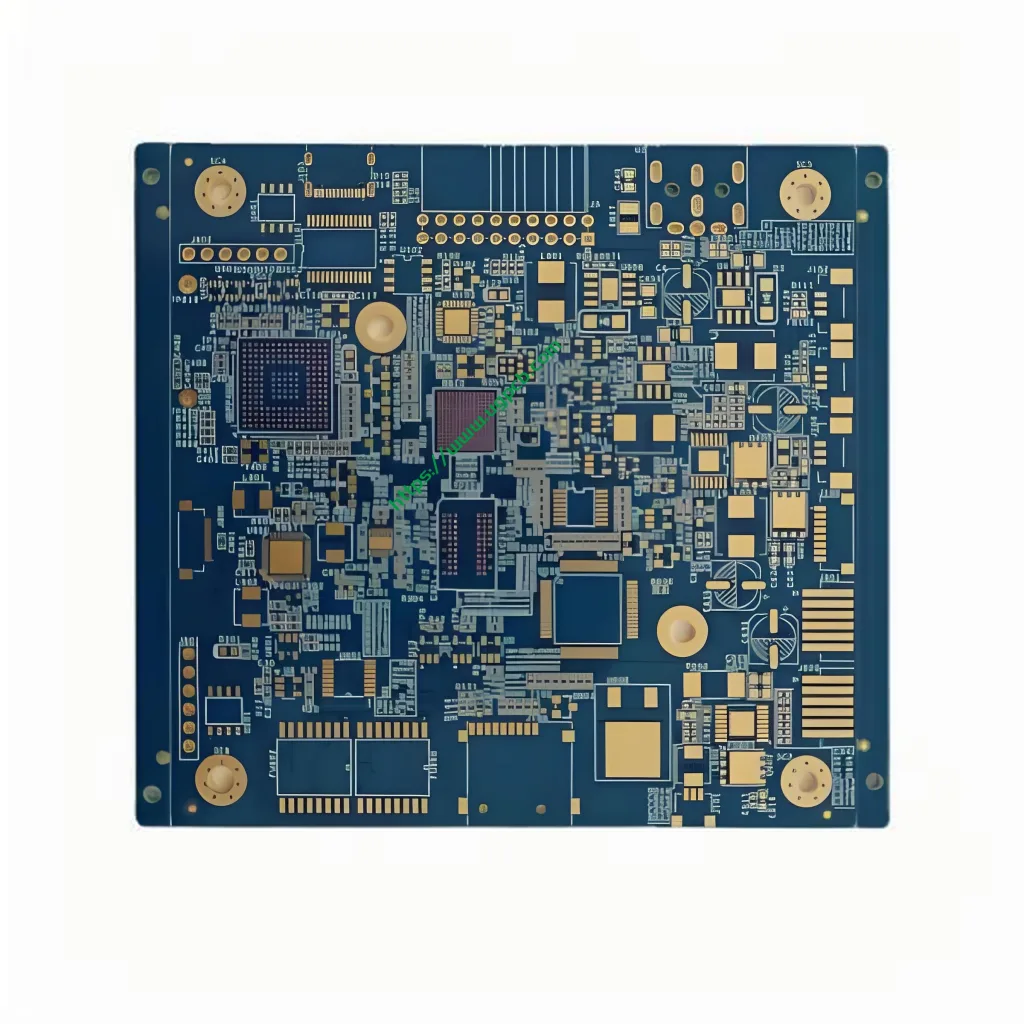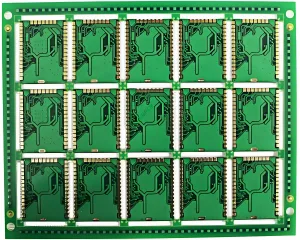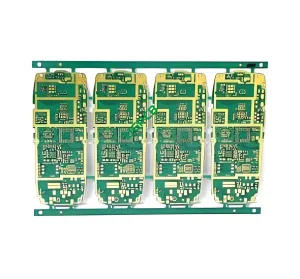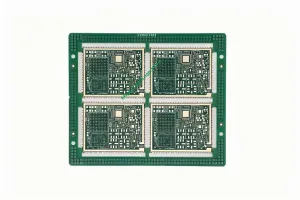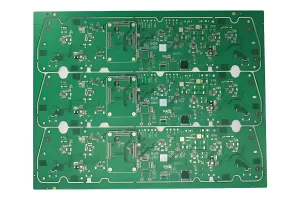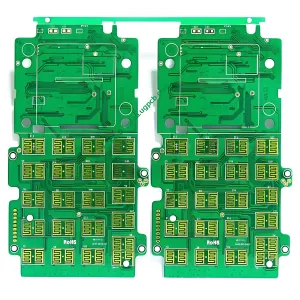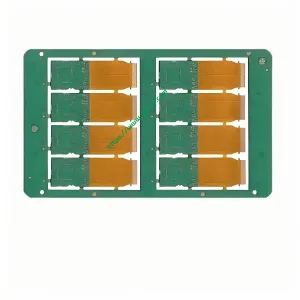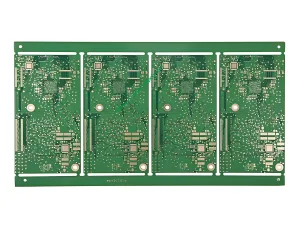What is a 6L 1+N+1 HDI PCB?
A 6L 1+N+1 HDI PCB stands for a six-layer High Density Interconnect (مؤشر التنمية البشرية) printed circuit board, featuring one core layer flanked by N signal layers and another core layer. This configuration allows for high density interconnections, making it suitable for advanced electronic applications. ال “1+N+1” designation refers to the arrangement of the core layers and signal layers.
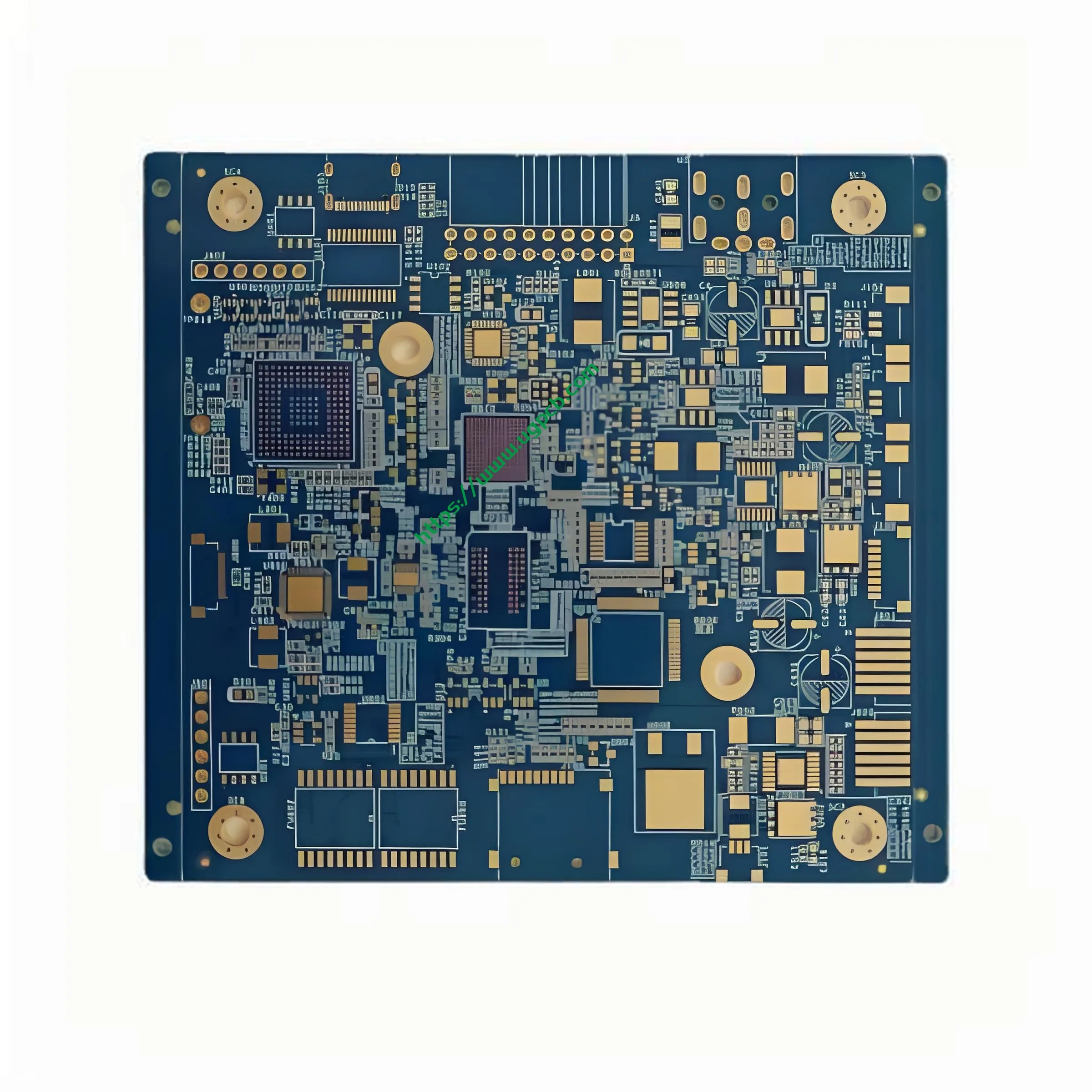
Design Requirements
The design of a 6L 1+N+1 HDI PCB requires careful consideration of several factors:
- Layer Stacking: Proper alignment of the core and signal layers to ensure optimal electrical performance.
- Trace and Space: Minimal trace width and space of 3mil/3mil to accommodate fine features.
- Hole Sizes: Mechanical holes as small as 0.2mm and laser holes down to 0.1mm for precise component placement.
- سمك النحاس: Varied copper thickness with inner layers at 1OZ and outer layers at 0.5OZ to balance conductivity and flexibility.
How Does It Work?
The functionality of a 6L 1+N+1 HDI PCB relies on its multilayer structure and the use of high-density interconnects. Each layer serves a specific purpose:
- Core Layers: Provide structural integrity and act as the foundation for signal layers.
- Signal Layers: Carry electrical signals between components.
- Immersion Gold Surface Treatment: Ensures excellent solderability and long-term reliability by preventing oxidation.
Applications and Classifications
These PCBs are primarily used in intelligent digital products where compact size and high performance are crucial. They can be classified based on their complexity and the number of layers, with the 6L 1+N+1 configuration being highly versatile for various applications.
Materials and Performance
Constructed from FR-4 (ITQ), these PCBs offer excellent thermal stability and mechanical strength. The green/white color scheme aids in visual inspection and troubleshooting. The finished thickness of 1.0mm provides a robust yet flexible board suitable for intricate designs.
Structure and Features
The unique structure of a 6L 1+N+1 HDI PCB includes:
- Six Layers: One core layer, N signal layers, and another core layer.
- High Density Interconnects: Allow for complex routing and minimal space usage.
- Immersion Gold Surface: Enhances conductivity and protects against corrosion.
Production Process
The manufacturing process involves several sophisticated steps:
- Material Preparation: Selecting high-quality FR-4 substrate and copper foils.
- Layer Stacking: Arranging the layers in a precise order to achieve the desired “1+N+1” configuration.
- Bonding: Using heat and pressure to bond the layers together.
- النقش: Applying etchant to remove excess copper, leaving only the desired conductive paths.
- Plating: Adding a thin layer of metal to improve conductivity and solderability.
- المعالجة السطحية: Applying immersion gold to protect against oxidation and enhance solderability.
- ضبط الجودة: Conducting thorough inspections and tests to ensure each board meets stringent quality standards.
Use Cases and Scenarios
6L 1+N+1 HDI PCBs are ideal for use in intelligent digital products where miniaturization and high performance are critical. Common applications include:
- الهواتف الذكية: Enabling slimmer designs without compromising on functionality or performance.
- أقراص: Providing reliable connectivity for high-speed data transfer and processing.
- Wearable Devices: Supporting compact designs while maintaining robust performance and durability.
 شعار UGPCB
شعار UGPCB

